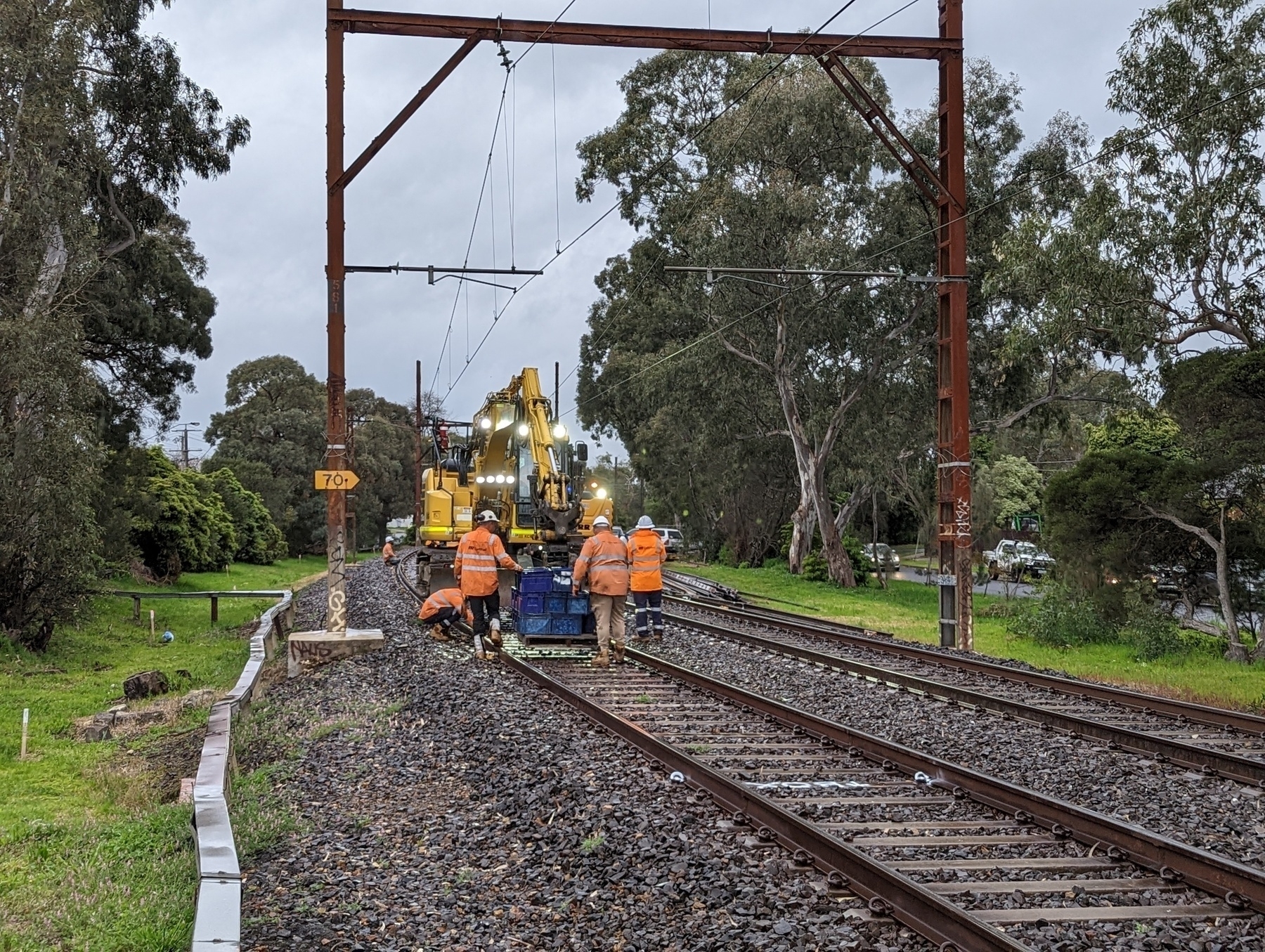-
Really tired this morning. Work up last night due to a production incident. Must say that nothing goes out to prod quicker than a 3 AM change you hope will just shut the damn PagerDuty alerts up.
-
Letting Queries Actually Be Queries In Dynamo-Browse
I spent some more time working on dynamo-browse over the weekend (I have to now that I’ve got a user-base 😄). No real changes to scripting yet. It’s still only me that’s using it at the moment, and I’m hoping to keep it this way until I’m happy enough with the API. I think we getting close though. I haven’t made the changes discussed in the previous post about including the builtin plugin object. Continue reading →
-
I miss working on monoliths. Micro-services are just so painful to test. So many moving parts you need to get working before you can even start.
Then you’ve got serverless stuff. Go to test those, and wow, you’ll wish you were testing micro-services. 😟
-
Saw someone at work use Numi to show some maths so I’m giving it a try. Only just started using it but I already like it. Feels very similar to Tot and Boop: a small MacOS utility that fits nicely in that middle-ground between Calculator and a spreadsheet.

-
Absolutely incredible seeing how far AI image creation has come. I know this was years in the making, but with all the recent launches, it feels like the change has happen over mere months. Will need to give it a try.
-
At least one photo will be taken at this event (well technically the setup of the event).

-
Discovered that I can use a URL shortener to grab a link from my Android phone and open it on my iPad. I guess that means I’m finally up to speed on the awesome ideas of 2007. 😀
-
My whimsical side might be developing a little. I’m starting to come round to the wiggly seek bar in Android.
-
Rail works.

-
The Australian Republic Question
With the passing of Queen Elisabeth II, the talk of whether Australia should become a republic will probably start making the rounds once more. I don’t consider myself a royalist, and when the last referendum on the issue came around, I voted in favour of becoming a republic. The idea of having the British Royal Family as the head of state of a country halfway around the world seem anachronistic to me, and I was disappointed when the referendum failed. Continue reading →
-
Flags at half mast at the school today to mark the passing of Queen Elizabeth II.

-
Those worried about video-centric podcasts ruining the format can allay their fears. The killer feature of podcasts is that you can listen to them without having to pay attention to anything visual. Video may fill a nitch, but I can’t see it taking over the entire format.
-
I’ve been tinkering around with Pico-8 game development recently. I like how limiting it is. Expectations are not too high, which helps given that I’m hopeless at the non-coding aspects of game design, like artwork.
It’s quite a joy. Reminds me a lot of making games in QBasic back in the day.
-
And while we’re on the subject of tests: make it easy for me to launch tests quickly from the IDE. Refusing to run a test because a particular environment variable is not set is really annoying, especially when a suitable default value would work 90% of the time.
-
The unit test I’m working on uses so many mocks it’s infuriatingly difficult to change anything. I wonder if a better approach is to just mock out external dependencies and use the actual services in the test. May not be as unit-ey, but would make it easier to move things around.
-
Finished version 0.0.3 of Audax Toolset yesterday. The code has been ready since the weekend, but it took me Sunday morning and yesterday (Monday) evening to finish updating the website. All done now.
Now the question is whether to continue working on it, or do something different for a change. There are a few people using Dynamo-Browse at work now, so part of me feels like I should continue building features for it. But I also feel like switching to another project, at least for a little while.
I guess we’ll let any squeaky wheels make the decision for me.
-
Drop in replacement for the github.com/pkg/errors package. The original package is archived as there’s a plan to change how Go handles errors. But not all of us are ready to adopt this yet.
-
Detecting When GetItem On DynamoDB Returns Nothing
I was trying to remember how best to detect when a GetItem call to DynamoDB returns no values. That is, when there’s no item with that key in the table. This is in a project that is using v2 of the Go AWS SDK. After poking through some old code that did this, it looks like the way to do so is to check that the returned Item field is nil: Continue reading →
-
Some Photos of The Yarra Trail
Went for a very short walk of the Yarra Trail around Heidelberg on Saturday. The evening light was really lovely so I though I’d take some photos. Continue reading →
-
Milestone
For a while, I’ve been trying to maintain a writing streak. I need to write at least one blog post or journal entry a day. Today that streak has been maintained for a full year. I will admit that the streak was not completely continuous: I had to go back a few times and retroactively add a post. But even so, I’m quite please with reaching this milestone. Onward to the next one. Continue reading →
-
It could be that I’m just an old fogie that doesn’t like whimsy, but chalk me up as someone who doesn’t like the wiggling seek bar in Android’s playback notification.

-

Currently reading: On Writing Well, 30th Anniversary Edition by William Zinsser 📚
Only a few chapters in, but so far a great read.
Via Rec Diffs #188
-
I make something and not share it with anyone, I become frustrated.
I make something, share it with others, and they don’t use it, I become disappointed.
I make something, share it with others, and they do use it, I become terrified.
There’s no middle ground here, is there?
-
Knocked off some merge requests from my inbox and about to start work on a nicely sized development task. Looking to be a good Friday for coding. 🧑💻
-
I’ve been using Dynamo-Browse all morning and I think I’ll make some notes about how the experience went. In short: the command line needs some quality of life improvements. Changing the values of two attributes on two different items, while putting them to the DynamoDB table each time, currently results in too many keystrokes, especially given that I was simply going back and forth between two different values for these attributes.
So, in no particular order, here is what I think needs to be improved with the Dynamo-Browse command line:
- It needs command line completion. Typing out a full attribute name is so annoying, especially considering that you need to be a little careful you got the attribute name right, lest you actually add a new one.
- It needs command line history. Pressing up a few times is so much better than typing out the full command again and again. Such a history could be something that lives in the workspace, preserving it across restarts.
- The
set-attranddel-attrcommands need a switch to take the value directly, rather than by prompting the user to supply it after entering the command (it can still do that, but have an option to take it as a switch as well). I think having a-setswitch after the attribute names would suffice.
Finally, I think it might be time to consider adding more language features to the command line. At the moment the commands are just made up of tokens, coming from a split on whitespace characters (while supporting quotes). But I think it may be necessary to convert this into a proper language grammar, and add some basic control structures to it, such as entering multiple commands in a single line. It doesn’t need to be a super sophisticated language: something similar to the like TCL or shell would be enough at first.
It might be that writing a script would have solved this problem, and it would (to a degree at least). But not everything needs to be a script. I tried writing a script this morning to do the thing I was working on and it felt just so overkill, especially considering how short-lived this script would actually be. Having something that you can whip up in a few minutes can be a great help. It would have probably taken me 15-30 minutes to write the script (plus the whole item update thing hasn’t been fully implemented yet).
Anyway, we’ll see which of the above improvements I’ll get to soon. I’m kinda thinking of putting this project on hold for a little while, so I could work on something different. But if this becomes too annoying, I may get to one or two of these.